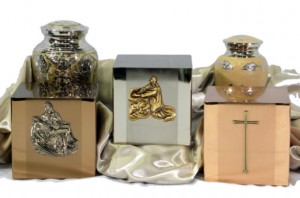Coping with the death of a loved one is a difficult and turmultuous time for anyone. Those affected are oftentimes overhelmed with the responsibility of not only making all of the arrangements for the funeral, but also administering the final affairs of the deceased that were heretofore left unattended or unresolved. Oftentimes, managing this process is performed in tandem while dealing with the added stress of financial worries that accompany the loss of their loved one. During this time those left to mourn the passing of a loved one can be so consumed by the required logistics and managment of affairs that the full impact of their loss may not be realized until well after the funeral is over. They are left to reflect on their loved one’s passing while being immersed in loneliness that inevitably accompanies the loss of a companion. It is during this time that friends and family must be vigilant in recognizing the outward signs of grief the survivor may be experiencing and stand poised ready to intervene with their support if required.
Grief can manifest itself in a number of ways and signs can generally be categorized into three basic groups: physical symptoms, emotional implications, and social indicators. Below are just a few of the more common ways grief may demonstrate itself through each of these three categories.
Physically, someone who is grief stricken may find themselves experiencing headaches, weakness, fatigue, as well as aches and pains. Someone experiencing grief may also experience difficulty sleeping or even a loss of appetite. Concerned friends or family members should pay close attention to such complaints and be alert to changes in the disposition of a despondent loved one.
Emotional manifestations of grief in a surviving family member can include sadness, excessive worry, periods of profound frustration, and even anger. Survivors may even experience guilt; being overcome with a feeling of responsibility for not having done enough and unable to see the good they have done. Such is typically the case in situations of suicide or death brought forth by disease or violence.
The social aspects of grief are oftentimes the most apparent for close friends and family members who may not necessarily be privvy to the physical or emotional signs that follow grief in an individual. Many times someone who is experiencing profound grief will feel detached from others, even close friends and family. Detachment will often lead to one isolating him or herself from social contact.
There are practical, proactive steps you can take to help your friend or family member work through their grief. These small gestures can go a long way toward relieving some of their worries and anguish. In addition, each is a good excuse to give them the companionship they may otherwise be lacking during this difficult time; companionship they may not seek out or wish to burden another to provide. The mere fact that you’re taking your time to be with them and help them through some otherwise mundane tasks will provide them with the security of knowing that they are not alone. Here are just a few examples of things you can do to help through it:
- Assist the bereaved in making arrangements for the funeral
- Do some of their grocery shopping for them
- Take them to lunch or dinner to give them some time outside the confines of their home
- Perform some of their housekeeping tasks, such as vacuuming or laundry
- Play the chaffeur and drive them where they need to go
- Accompany them to religious services
- Help them manage their bills
- Make or drop off dinner for them
- Take them out to go shopping or to see a movie together
When helping someone work through their grieving process, it’s important to keep in mind that they will not totally overcome the emotional injury that they have endured. That said, however, your love, care, and support will certainly help them through the most difficult times and prevent them from falling into physical and emotional isolation. Providing companionship also gives you the opportunity to assess how they are coping without browbeating them with questions regarding how they are holding up or appearing overbearing. Coping with the death of a loved one is a transitional period for the bereaved and everything you can do to help them through that painful process will go a long way toward making a difficult journey a little more bearable.

 When selecting a cremation urn for yourself or a loved one, there is no shortage of styles, sizes, and types to choose from. From final disposition to aesthetics to matters as mundane as size, there are a number of factors that one must consider when selecting just the right cremation urn for you or your loved one.
When selecting a cremation urn for yourself or a loved one, there is no shortage of styles, sizes, and types to choose from. From final disposition to aesthetics to matters as mundane as size, there are a number of factors that one must consider when selecting just the right cremation urn for you or your loved one.